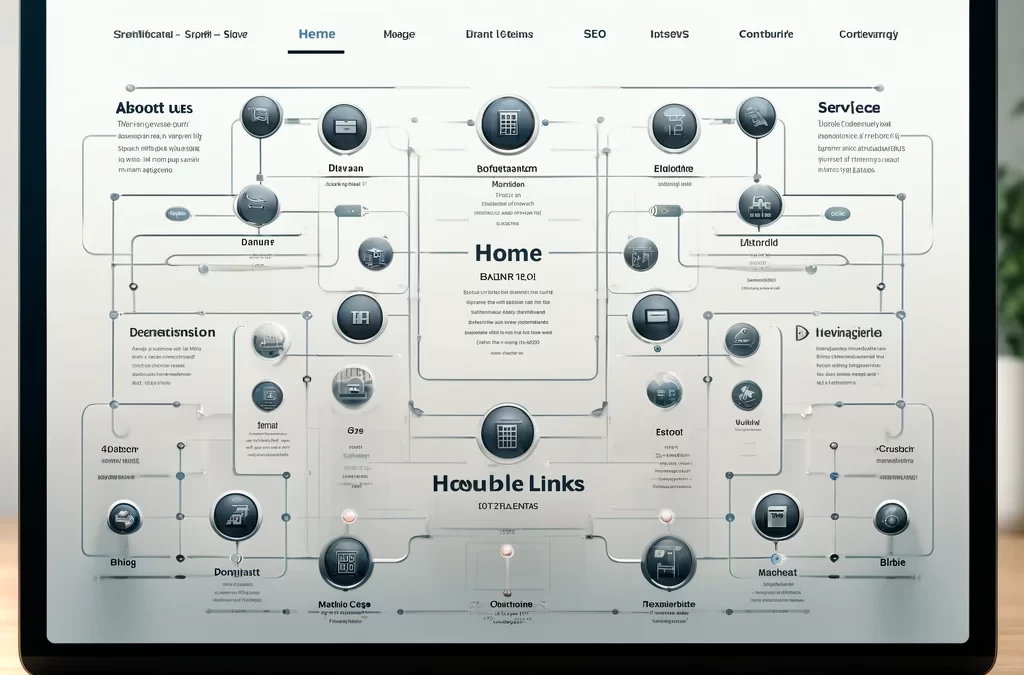In the early days of the internet, websites were developed in an unstructured manner. There was no standardized organization, and webmasters frequently added content using HTML without a clear framework. While this method initially sufficed, it soon became evident that a more systematic approach was necessary to facilitate user navigation as the number of websites grew exponentially.
Webmasters recognized that sitemaps could enhance organization and navigation. A sitemap is a structured list of all the pages on a website, typically arranged hierarchically. This structure enables users to quickly locate relevant information and gain an overall understanding of the website. Additionally, sitemaps assist search engines in efficiently crawling and indexing web pages.
Learn more about website sitemaps
HTML sitemaps are a specific type of sitemap that contribute to both organization and SEO. An HTML sitemap is a dedicated webpage that lists links to all pages on a site in a hierarchical format. This tool significantly enhances user experience and search engine optimization (SEO).
Enhancing SEO with HTML Sitemaps
Search engine optimization (SEO) involves improving a website’s visibility on search engines by optimizing its content, structure, and links. One effective way to enhance SEO is by utilizing HTML sitemaps.
HTML sitemaps enable search engines to crawl and index a website’s pages more effectively. By providing a well-defined hierarchy, search engines can better understand a website’s structure and content. This improved clarity can lead to higher rankings on search engine results pages (SERPs).
Check out Google’s guide to sitemaps
Additionally, HTML sitemaps support internal linking, a crucial SEO factor. Internal links connect different pages within the same website, helping search engines comprehend the relationships between pages and distributing link authority evenly. By incorporating internal links into an HTML sitemap, webmasters ensure that all pages are discoverable and properly indexed, ultimately boosting the site’s ranking on SERPs.
Enhancing User Experience with HTML Sitemaps
User experience (UX) is a vital aspect of website design, influencing engagement, satisfaction, and conversion rates. HTML sitemaps serve as a valuable tool in enhancing UX.
By offering a structured and concise overview of a website’s layout, HTML sitemaps enable users to find information more efficiently. This is especially beneficial for large or complex websites where navigation might be challenging.
Moreover, HTML sitemaps improve accessibility for users with disabilities. By presenting a clear roadmap of a site’s pages, they facilitate easier navigation, ensuring a more inclusive user experience.
Creating HTML Sitemaps
Creating an HTML sitemap is a straightforward process that can be done using either a sitemap generator tool or manual coding with HTML or XML.
Use this free sitemap generator
Online sitemap generators can automatically compile a sitemap based on a website’s pages. These tools are often free or available at a low cost, providing a quick and efficient way to generate an HTML sitemap.
For those with HTML or XML expertise, manually creating an HTML sitemap offers greater customization. This involves listing links to all website pages in a hierarchical order and formatting them appropriately using HTML. Though time-consuming, this method allows for tailored sitemap design and content arrangement.
Once an HTML sitemap is created, it should be linked from the website’s footer or header menu to ensure easy access for users and search engines alike. By implementing a well-structured HTML sitemap, webmasters can significantly improve both SEO and user experience.

